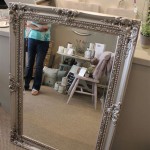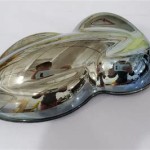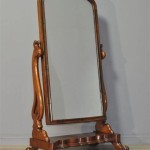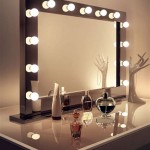Where Should a Mirror Be Placed in a Dining Room?
Mirrors are powerful design tools, capable of transforming a space by enhancing light and creating the illusion of greater size. In a dining room, strategically placed mirrors can elevate the ambiance and improve the overall dining experience. However, mirror placement requires careful consideration to maximize its positive effects.
Reflecting Light and Space
One of the primary functions of a mirror in a dining room is to amplify natural light. Positioning a mirror opposite a window allows it to reflect incoming sunlight, brightening the room and creating a more welcoming atmosphere. This is particularly beneficial in dining rooms with limited natural light sources. Additionally, mirrors can create the illusion of a larger space. Placing a large mirror on a wall can visually double the room's size, making it feel more open and airy.
Highlighting Focal Points
Mirrors can be used to draw attention to specific design elements within the dining room. For instance, positioning a mirror above a fireplace or a striking piece of artwork can highlight these features and enhance their visual impact. The reflection adds another dimension to the focal point, enriching the overall aesthetic of the room.
Creating a Sense of Grandeur
Large, ornately framed mirrors can add a touch of elegance and grandeur to a dining room. These mirrors can serve as statement pieces, elevating the room's overall aesthetic and creating a more formal dining experience. Consider the existing decor and choose a mirror style that complements the overall design theme.
Mirror Placement: Best Practices
While there are numerous creative ways to incorporate mirrors into a dining room, certain placement strategies are more effective than others. Avoiding placing mirrors directly opposite doorways is generally recommended, as this can create a disruptive flow of energy. Instead, focus on reflecting positive elements within the room.
Considering the Reflection
Before placing a mirror, carefully consider what it will reflect. Ideally, the mirror should reflect pleasing elements such as artwork, chandeliers, or a well-set table. Avoid placing mirrors where they will reflect cluttered areas or less visually appealing aspects of the room.
Size and Shape Considerations
The size and shape of the mirror should be proportional to the dining room and its existing furniture. A large, oversized mirror in a small dining room can overwhelm the space, while a small mirror in a large room may appear insignificant. Choose a size that complements the room's dimensions and creates a balanced aesthetic.
Mirror Placement Options
Several strategic placement options can maximize the benefits of a mirror in the dining room. Over a sideboard or buffet, a mirror can add height and reflect the table setting. On a main wall, a large mirror can create a focal point and expand the perceived space. Adjacent to a window, the mirror can amplify natural light and brighten the room.
Types of Mirrors for Dining Rooms
The selection of mirror types available for dining rooms is vast. From simple, frameless mirrors to ornate, antique-style mirrors, the choice depends on the desired aesthetic. Consider the existing décor and choose a mirror that complements the overall design scheme. Popular options include Venetian mirrors, modern geometric mirrors, and classic rectangular mirrors.
Enhancing the Dining Experience
A well-placed mirror can significantly enhance the dining experience. The reflected light creates a brighter and more inviting atmosphere, while the illusion of increased space can make the room feel more comfortable and less cramped. By reflecting the dining table and its setting, the mirror can also add a sense of occasion and formality to meals.
Maintenance and Care
Maintaining the cleanliness of a dining room mirror is essential for preserving its reflective qualities. Regularly dusting the mirror surface with a soft cloth will prevent the buildup of dust and grime. For more thorough cleaning, use a glass cleaner specifically designed for mirrors. Avoid using abrasive cleaners, as these can scratch the mirror surface.
Creating a Harmonious Atmosphere
The strategic placement of a mirror contributes significantly to the overall harmony and balance of a dining room. By carefully considering the reflection, size, and placement, individuals can utilize mirrors to enhance the room's aesthetics, create a more inviting atmosphere, and elevate the dining experience. A thoughtfully placed mirror can truly transform a dining room from a simple eating area into a stylish and welcoming space.

Spice Up Your Dining Room With Mirrors

The Best Place To Hang Mirrors In Your Home According Feng Shui Gdc

Transform Your Dining Room With A Mirror Decoholic

Dining Room Mirror Ideas Glass Genius

Dining Room Update Vertical Vs Horizontal Buffet Mirror

Should I Need A Dining Room Mirror Ideas
:strip_icc()/dining-room-mirror-ideas-1-ashley-montgomery-b90b98cab74443e9ab4f9d5e9f6ac2d2.jpeg?strip=all)
17 Dining Room Mirror Ideas That Ll Dress Up Your Walls

5 Mirror Vastu Placement Tips For A Happy Home Livspace

Spice Up Your Dining Room With Mirrors

How To Use Wall Sconces Design Tips Ideas Mirror Dining Room Decor Walls








